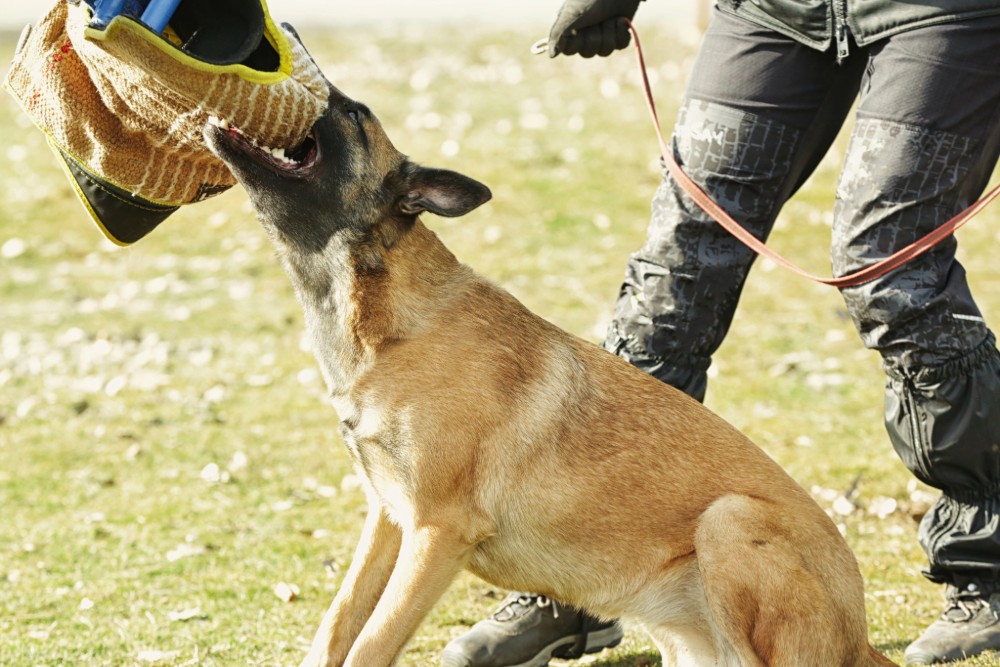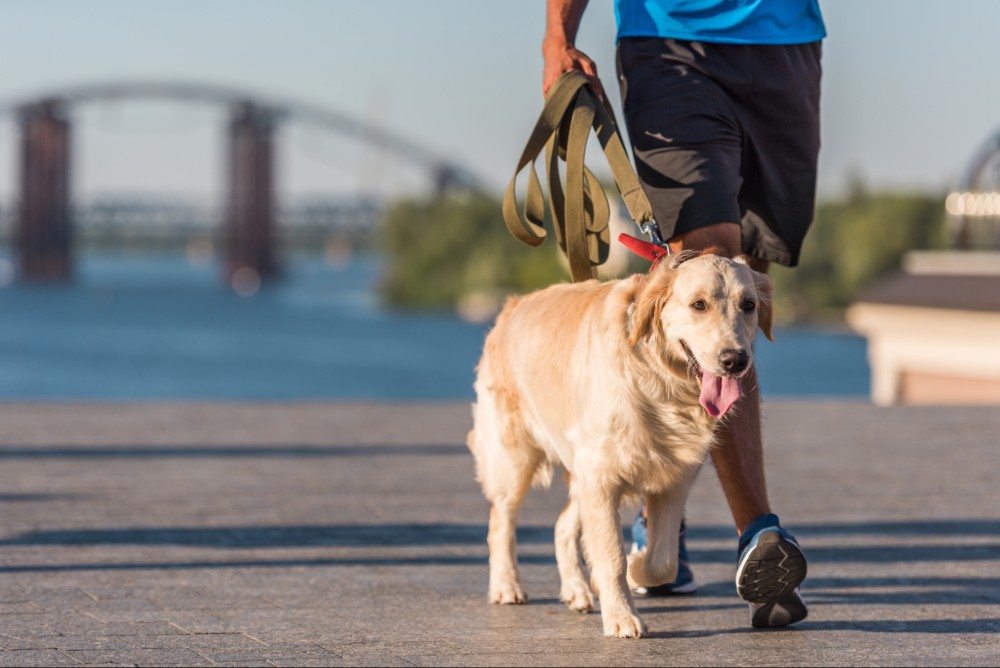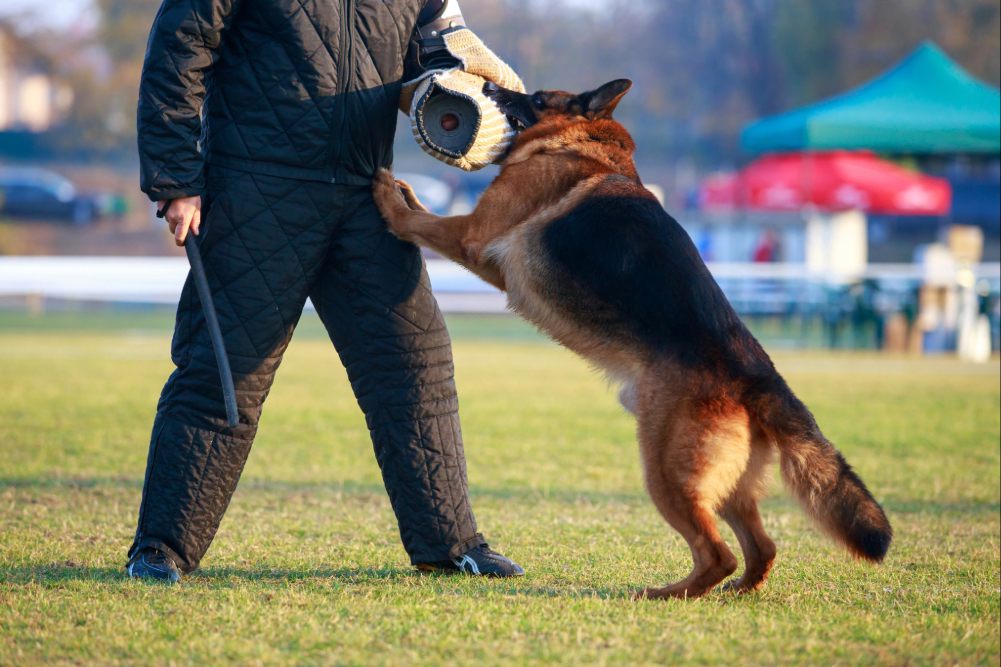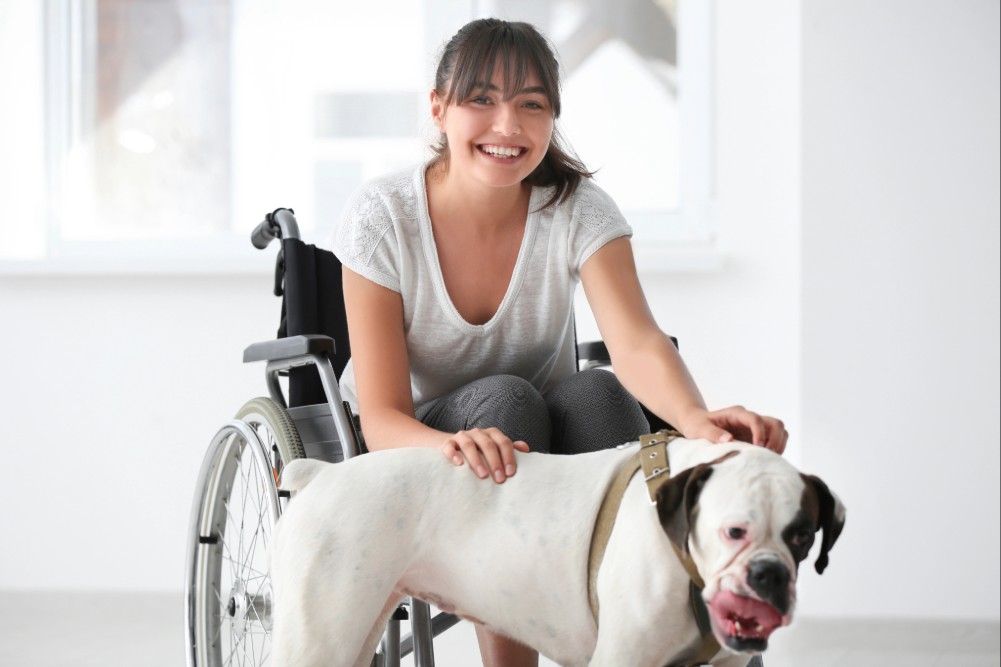
When it comes to aggressive dog training, addressing unwanted behavior requires patience, understanding, and a structured approach. Aggressive behaviors in dogs can stem from various sources, like territorial instincts, fear, past trauma, or anxiety. Proper training methods are important in curbing aggression and promoting healthier relationships between you and your dog.
Understanding Aggression in Dogs
This is often a response to fear, territorial behavior, or past negative experiences. Dogs that display aggressive tendencies may react with growls, barks, or lunges when they feel threatened, cornered, or overstimulated. Recognizing the underlying cause of aggression is the first step in addressing it, as different triggers require tailored approaches and strategies.
Fear-driven aggression typically involves defensive reactions, which can escalate if the dog feels trapped or overwhelmed. In these cases, building trust and creating a consistently safe and predictable environment for the dog is important. Positive associations help fearful dogs gain confidence while reducing reactive behaviors.
Gradual exposure to stressful situations at a manageable pace allows the dog to learn without force. This will foster more reliable, calm, and controlled responses over time. Additional patience and observation help identify subtle cues that indicate stress before aggressive behaviors escalate.
The Importance of Positive Reinforcement
Positive reinforcement is one of the most effective tools in aggressive dog training. Rather than punishing unwanted behavior, this method rewards desirable actions, encouraging the dog to repeat them. Rewards such as treats, praise, or playtime create associations between calm behavior and positive outcomes.
This technique is highly effective in changing a dog's response to stress or perceived threats. For instance, when a dog reacts aggressively to another dog, rewarding calm behavior helps the dog associate peaceful interactions with positive reinforcement.
This approach can be used in various situations, including service dog training and protection dog training, where the dog needs to remain calm and focused in demanding environments.
Creating a Safe and Controlled Environment
A controlled environment plays a key role in aggressive dog training. Dogs prone to aggression may react unpredictably in new or stressful settings. Controlling the environment allows the dog to focus and prevents reinforcement of unwanted behavior from external stressors.
Incorporating real-world training, such as leash walking in public spaces or house manners, is a great way to help aggressive dogs adapt to everyday situations. By practicing in familiar environments with controlled distractions, dogs can learn how to behave appropriately outside of a training setting. Over time, as they gain confidence and respond well to positive reinforcement, the dog's behavior improves significantly.
Handling Aggression with Consistency
Consistency in training is vital when addressing aggression in dogs. Aggressive behaviors do not disappear overnight, and dogs need clear, consistent guidelines to follow.
Trainers and owners should apply commands, rewards, and corrections uniformly. This helps dogs internalize expectations and reduces confusion or frustration. If training is inconsistent, the dog may become confused or frustrated, potentially worsening the aggression.
Maintaining a regular training routine fosters security and stability. Routine is required for dogs to learn and internalize desired behaviors, whether it involves aggression management, obedience, or specific tasks for service dogs. With clear expectations and ongoing practice, progress becomes evident over time.
Tailoring Training to the Individual Dog
Every dog is different, and training programs should reflect the individual needs of the dog. Some dogs may respond better to certain techniques, while others require a different approach. Customizing training plans based on the dog's temperament, background, and behavior history allows the dog to get the best chance for success.
Controlled K9 knows the importance of tailoring each training program to the specific needs of the dog and owner. Our approach makes it a point that every dog receives a personalized plan that addresses their unique challenges, including aggression.
No matter if you are training a service dog or preparing a dog for protection training, we design a program that will work for both you and your dog.
The Role of Socialization in Aggressive Dog Training
Socialization plays a significant role in reducing aggression in dogs. Dogs that have not been properly socialized may become fearful or aggressive when encountering new dogs, people, or environments. Exposing your dog to various experiences, in a controlled and positive way, helps them become more comfortable in different situations.
For dogs being trained for service dog work or protection duties, socialization is especially important. Service dogs need to remain calm and focused in busy public settings. Meanwhile, protection dogs must distinguish between legitimate threats and normal situations. Effective socialization helps dogs manage their emotions, making them more reliable and trustworthy companions.
Working with a Professional Trainer
In some cases, professional trainers are needed to address severe aggression. Trainers with experience in behavior modification can assess the dog's issues and give expert guidance. Professional training programs are designed to handle various levels of aggression, from mild reactivity to extreme territorial behavior.
Controlled K9 prides itself on working with dogs that others cannot or will not help. Our trainers have the expertise and experience needed to manage even the most challenging cases of aggression. With our personalized, one-on-one approach, we can help your dog overcome aggression and achieve lasting behavioral changes.
The Importance of Patience in Training
Patience is one of the most important qualities when working with aggressive dogs. Aggression does not change overnight, and progress can be slow. Trainers and owners must remain patient and understand that behavior modification is a gradual process. While there may be setbacks, consistent training and positive reinforcement will yield results over time.
With a focus on small, manageable goals, trainers can help dogs build confidence and reduce aggressive tendencies. It is best for both trainers and owners to stay committed and remain positive throughout the training process. With time and patience, aggressive behavior can be significantly reduced.
Reinforcing Progress with Regular Follow-up
Ongoing follow-up and maintenance are key components of aggressive dog training. Once initial training is complete, it is vital to continue reinforcing positive behavior. Regular check-ins with a trainer can help monitor the dog's progress and make adjustments as needed. This makes sure that the dog does not revert to aggressive behaviors over time.
Controlled K9 offers unlimited private lessons following a board and train program so that your dog continues to progress even after the initial training phase. Our ongoing support helps owners feel confident in managing their dog's behavior and reinforces the training long after it has ended.
When to Seek Professional Help
If you find that your dog's aggression is not improving despite consistent training, it may be time to seek professional help. Aggressive behaviors, especially when severe, require specialized knowledge and experience to address. A professional trainer can help diagnose the underlying cause of aggression and implement effective training methods.
At Controlled K9, we specialize in working with difficult dogs, including those that other trainers may not be equipped to handle. If your dog’s aggression is a concern, our expert trainers can develop a customized plan to manage and reduce these behaviors effectively.
Let Us Help You with Aggressive Dog Training
If you are struggling with aggressive dog behavior, Controlled K9 is here to help. Our personalized aggressive dog training programs are designed to address the unique needs of your dog and guide you toward a calmer, more balanced companion.
Do you need help with aggression, reactivity, or specific tasks like service dog training or protection dog training? We can create a plan tailored to you. Contact us today to schedule an evaluation and start the journey to a better relationship with your dog.




Comments